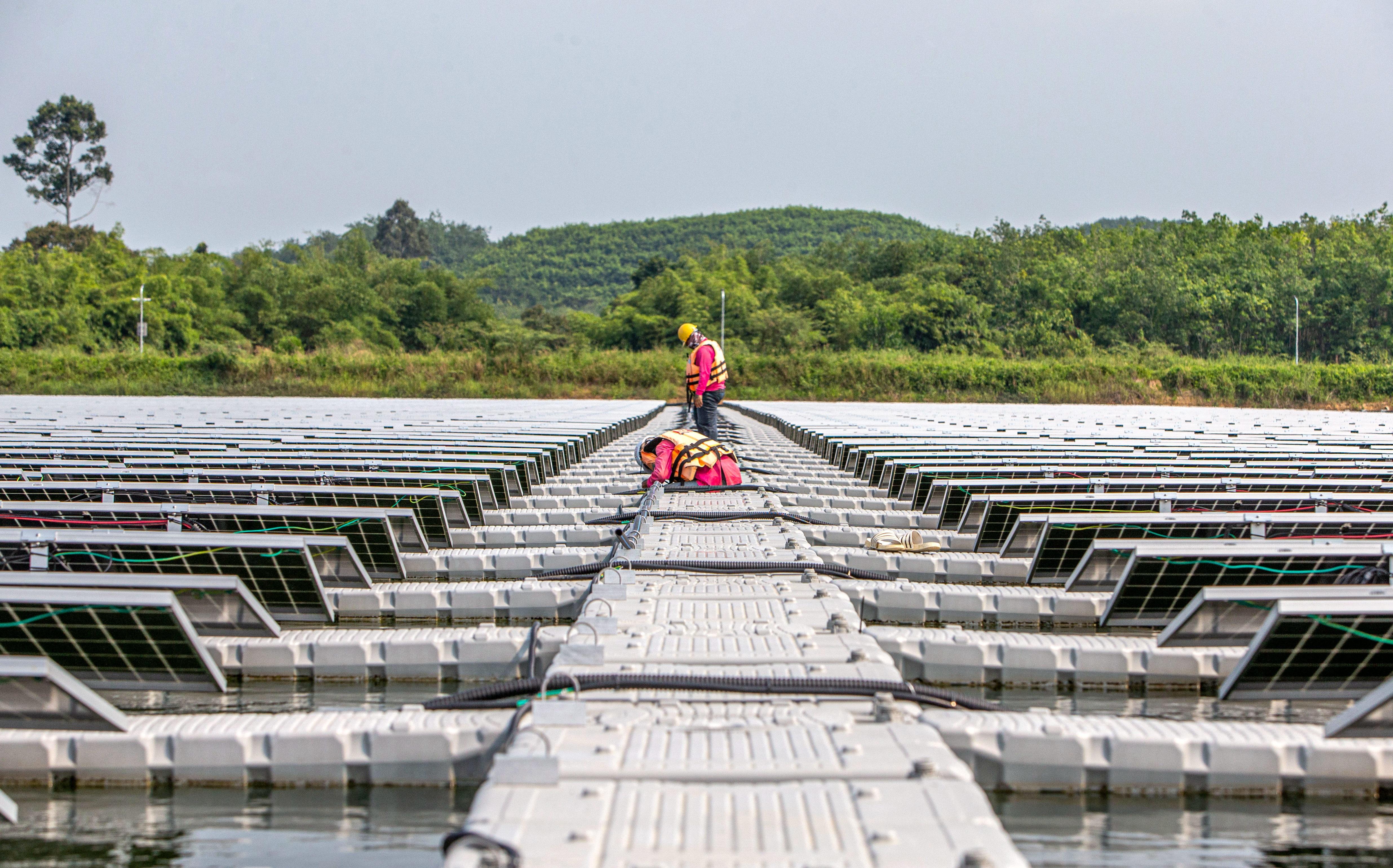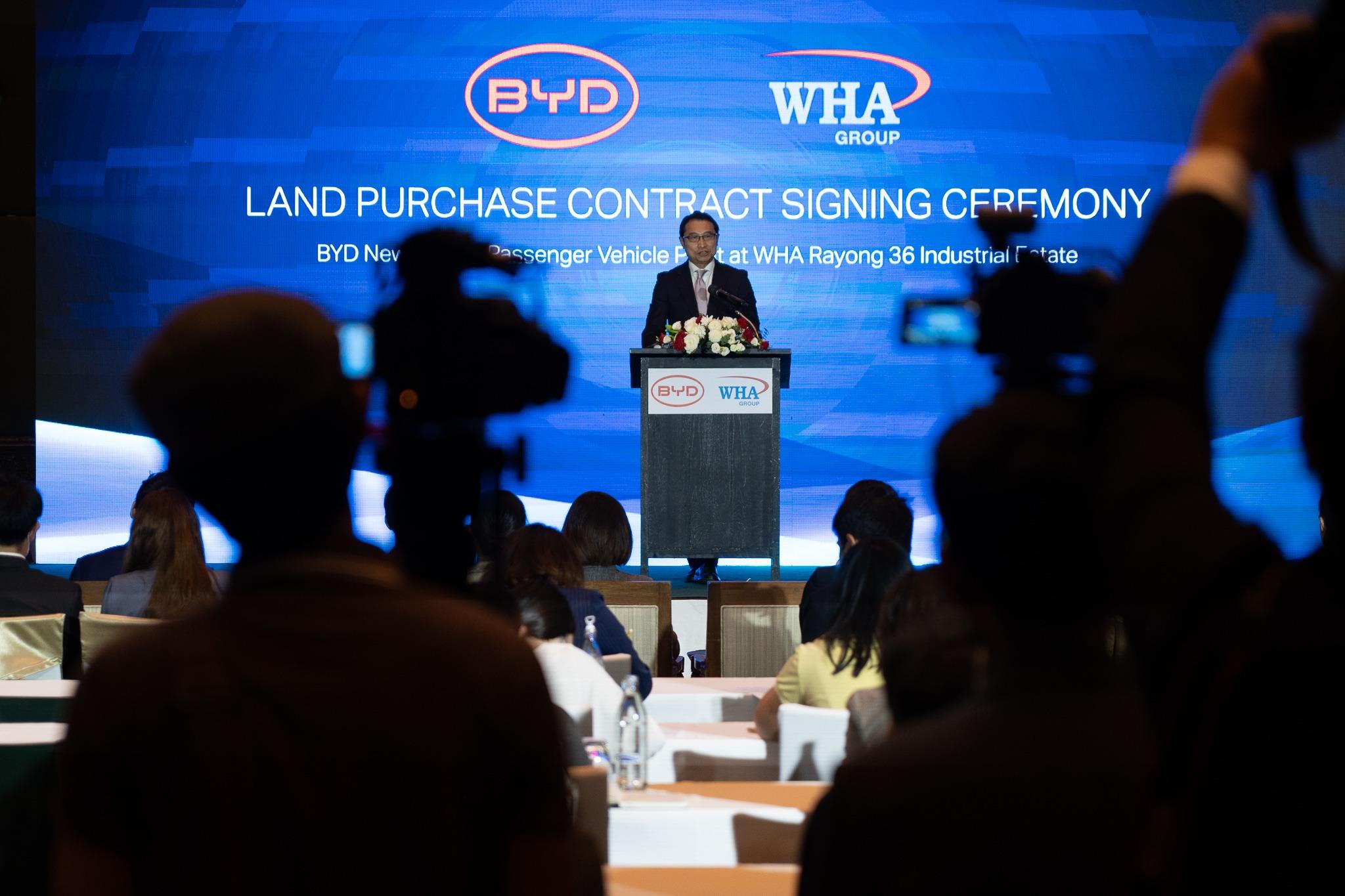But report urges Asia-Pacific to step up action on UN sustainable development goals
 Workers check a cable at a floating photovoltaic project in Rayong Province, Thailand, in April last year. The project was constructed with support from Chinese technology company Huawei. (PHOTO / XINHUA)
Workers check a cable at a floating photovoltaic project in Rayong Province, Thailand, in April last year. The project was constructed with support from Chinese technology company Huawei. (PHOTO / XINHUA)
The Asia-Pacific region has made good progress on affordable and clean energy, innovation and infrastructure, demonstrating an ongoing commitment to sustainable development despite many challenges, according to a regional intergovernmental platform.
However, the UN Economic and Social Commission for Asia and the Pacific, or ESCAP, said in its 2023 Asia-Pacific SDG Progress Report that overall progress in the region has been slow regarding the 17 sustainable development goals, or SDGs, and 169 targets.
Based on current trends, the commission said it will still take another 42 years for the region to reach its goals.
The 17 SDGs are social, economic and environmental goals adopted by the UN in 2015 as part of the 2030 Agenda for Sustainable Development.
Of the goals being investigated, the Asia-Pacific region has made the most progress in affordable and clean energy (Goal 7) and industry, innovation and infrastructure (Goal 9).
Armida Salsiah Alisjahbana, ESCAP's undersecretary-general and executive secretary, said that while progress toward climate action (Goal 13) was far below expectations, that made toward achieving Goal 7 was largely driven by achievements in access to electricity and international support for clean and renewable energy.
She added that progress toward achieving Goal 9 was driven by successes in mobile network coverage and infrastructure development in the least-developed countries.
Regarding Goal 7, a new trend to boost clean energy, green development and innovation has swept the region in recent years. For example, in Thailand, the government has drawn up a 20-year strategy to achieve high-income status by 2036.
This strategy, known as Thai 4.0, includes a wide range of top-down initiatives, especially in infrastructure and public development. It aims to transform the country into an innovative and value-based industrial base, with an emphasis on 12 fields, including digital, automation and robotics, aviation and logistics, and biofuel and biochemicals.
The Eastern Economic Corridor, or EEC, lies at the heart of Thailand 4.0. The EEC plan is being implemented in three eastern Thai provinces — Chonburi, Rayong and Chachoengsao.
Djitt Laowattana, special adviser to the EEC Office, said the aim of constructing the EEC in Thailand is to promote the nation's innovations on the world stage and transform its economy to adopt technology and innovations with an environmentally friendly policy.
China plays a supportive role on Thailand's road to green development.
A Chinese official said at the United Nations Economic and Social Council's Financing for Development Forum 2023 held at the UN headquarters in New York last month that China considers that humankind lives in the global village.
Luo Zhaohui, chairman of the China International Development Cooperation Agency, stressed at the forum that the development of all countries is the only real development.
"China is committed to narrowing the North-South gap and supporting and assisting other developing countries to accelerate development. We will continue our actions, make more contributions to achieving SDGs, and leave no country and people behind," Luo said.
China has shared its innovations and technological progress with the world to boost development for SDGs, especially among developing countries such as Thailand.
In March, BYD, a leading Chinese electric vehicle manufacturer, held a groundbreaking ceremony for its first car plant in Thailand, marking the latest move by Chinese automakers to expand their footprint in Southeast Asia. BYD is among the Chinese electric vehicle brands building factories in Rayong Province.
With China announcing in March that it would work closely with Thailand by giving it language and vocational support, Laowattana said this move will accelerate Thailand 4.0, especially in fields such as digital, automation and robotics, and aviation and logistics.
For years, Thailand has been the leader in solar and wind energy production in Southeast Asia. Now, it is planning to transition to a national energy mix that relies on renewable power to meet about 30 percent of the country's total electricity demand by 2037.
In December, the renewable power generation arm of Thai energy company Bangchak Corp announced plans to build a wind farm in Laos in cooperation with PowerChina International Group.
Comprising 133 wind turbines, the project, which has been named Monsoon, will be the largest wind power plant in Southeast Asia and the first in Laos, with the capacity to generate 600 megawatts of electricity.
In March, the project received an Asian Development Bank grant of about $700 million. Suzanne Gaboury, director-general of the ADB's Private Sector Operations Department, said the financing from the bank and its partners will help unlock Laos' untapped wind resources, providing a basis for the transition to clean energy.
 Liu Xueliang, general manager of BYD Asia-Pacific's auto sales division, speaks at a signing ceremony in Bangkok, Thailand, in September, at which Chinese automaker BYD signed the land purchase agreement to build its new electric vehicle factory in Rayong Province. (PHOTO / XINHUA)
Liu Xueliang, general manager of BYD Asia-Pacific's auto sales division, speaks at a signing ceremony in Bangkok, Thailand, in September, at which Chinese automaker BYD signed the land purchase agreement to build its new electric vehicle factory in Rayong Province. (PHOTO / XINHUA)
Warning issued
Despite the progress made, the UN report indicated that the Asia-Pacific region is still lagging behind in achieving all the SDGs. It warned that the region has only made 14.4 percent of the progress required. At the current pace, it will miss 90 percent of the 118 measurable SDG targets by 2030 unless efforts are stepped up.
Alisjahbana, from ESCAP, said: "While there are impressive national accomplishments across the 17 goals, none of the countries in the region are on track to reach them, and overall achievement is much lower than anticipated for the midpoint.
"In developed and developing countries alike, persistent data gaps remain. Governments must renew their commitments to producing relevant, timely, granular, high-quality information to monitor and review the march toward the SDGs," she added.
While there is enough data for countries to act with greater ambition on implementing the SDGs, data availability for evidence-based follow-up and review remains a significant hurdle in carrying out the 2030 Agenda.
For data collected in the region from 2017 to last year, the number of indicators with sufficient data availability rose from 63 to 128, but the rate of increase in data availability and sufficiency continued to slow, with only a 4 percent rise in sufficient data availability last year.
Rachael Beaven, director of ESCAP's Statistics Division, said that while the full impact of COVID-19 has yet to be quantified, data on a limited number of indicators are beginning to reveal the full effect the disease had on people, the planet and prosperity.
"Although data availability for SDGs has doubled since 2017, there is still insufficient data for 51 out of 169 targets," she added, calling for support from government sectors and research institutions for the data collecting system and to better serve policymaking bodies.
Given the slow rate of improvements in data availability, it is estimated that the Asia-Pacific region will not have enough data to measure every SDG indicator by 2030.
Data availability among small developing island states is significantly lower than for landlocked developing countries and least-developed nations, although it has gradually improved over time.
The top five destinations with the poorest performances in providing the number of such indicators are the Northern Mariana Islands, American Samoa, Guam, French Polynesia and New Caledonia.
For data availability last year, the UN report showed that nearly half of SDG indicators were either insufficient or not available, most noticeably for Goals 5 (gender equality), 14(life below water) and 16 (peace, justice and strong institutions). For Goals 5 and 14, only 14 percent and 20 percent of data respectively was available.
Arman Bidarbakhtnia, head of the Statistical Data Management Unit at ESCAP's Statistics Division, said: "It is true that there is insufficient data for nearly half of the SDG indicators. This in itself is an important message that the report has emphasized by calling on governments in the region to step up their efforts and show more commitment to producing this data."
However, he said the available data provides valuable information for nearly 70 percent of the SDG targets, and the lack of data for the other 30 percent does not undermine the quality of available data and subsequent accuracy of the analysis.
"With more data, we could present a more comprehensive picture of progress, but existing data still provide us with the best knowledge we can have on regional progress, our priority areas and obstacles in achieving the SDGs," Bidarbakhtnia said.
Bridging the SDG data gaps in Asia-Pacific requires public and private investment, but finance is not the only factor in collecting such information, the report said.
By adopting innovative approaches, existing administrative processes and survey exercises can be used to produce data that bridge the gaps and enable SDG monitoring and evidence-based policymaking, in particular for Goals 5 and 16, where the largest data gaps exist, the report added.
Bidarbakhtnia said: "The report provides a set of tools, standards and initiatives for countries to enhance data availability for Goals 5 and 16, where our analysis shows all countries- high- and low-income alike — have not made progress in improving data availability since 2017.
"There is no doubt that we need more investment in statistical development in low-income countries. But the fact that countries with the highest incomes in the region have not progressed in making more data available for Goals 5 and 16 suggests that commitment to transparency and evidence-based policymaking are equally important for statistical development," he added.


